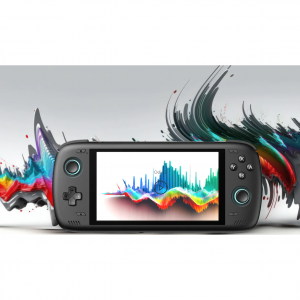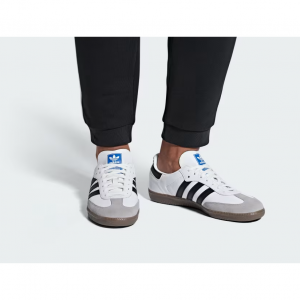
MSI Claw vs. ROG Ally Z1 vs. Z1 Extreme: Differences and Reviews 2024
In the thriving gaming world, handheld gaming PCs are revolutionizing the way gamers access their favorite titles on the go. When Asus released the ROG Ally last year, it made a huge splash as a competitor to the Steam Deck. Since then, multiple companies (such as Lenovo Legion Go) have released their own gaming handhelds and the latest to join the ranks is the MSI Claw. These handheld devices blend the power of a gaming PC with the portability of a console, providing gamers with the flexibility to play their PC games virtually anywhere. If you want to buy a handheld gaming PC, which one is best for you? MSI Claw or ASUS ROG Ally Z1 or ASUS ROG Z1 Extreme? In this article, we’ll explore the specifications, features, battery life, performance, display quality, control setup, and pricing of three devices to determine which one offers a superior gaming experience on paper.
MSI Claw Reviews
The MSI Claw sports a 7-inch Full HD screen and harnesses the power of an Intel Core Ultra chip, and the price starts from $699.99. It stands out in the market for its ability to run graphically intensive games, asserting itself as a promising contender in the portable gaming sphere. According to the company, Intel’s processor gives the Claw better performance and battery life than handhelds featuring an AMD chip.
The MSI Claw’s name comes from its ergonomics and while that’s a facet most handheld tech should consider, it’s especially important for gaming. If you're going to be holding a device for hours at a time, it better be comfortable. That's where one of the Claw’s most exciting details comes to life, as it’s built with two controller-like grips at the back.
Elsewhere, the Claw’s design greatly resembles that of the ROG Ally, with the face buttons, D-Pad, and joy sticks taking the same layout as a traditional Xbox gamepad. Differences include its black finish and back triggers with Hall Effect sensors, meaning no physical contact is required for input to go through.
The MSI Claw is bigger when compared to the Asus ROG Ally in weight and size, coming in at 11.6 x 4.6 x 0.85 inches and 1.48 pounds. The Asus ROG Ally comes in 11.02 x 4.37 x 0.83-1.28 inches, 1.34 pounds.

Pros & Cons
| Pros | Cons |
|
|
ROG Ally Reviews
The ROG Ally and MSI Claw are similar in that they both run Windows 11 and are basically small gaming laptops with controllers attached to them. The ROG Ally comes in two different versions with separate price points. First off, there's the ROG Ally Z1 with 512GB of space that starts at $599.99 (now for $399.99), but then there's also the ROG Ally Z1 Extreme, a more powerful handheld, that starts with a $699.99 MSRP (now for $599.99).
There’s a key difference between the MSI Claw and ROG Ally: the processors. The MSI Claw features Intel processors, specifically the Intel Core Ultra 5 or Ultra 7 depending on the variant you opt for, coupled with 16GB of RAM and either 512GB or 1TB of storage. The ROG Ally, on the other hand, has gone down the AMD route with either the standard Ryzen Z1 or more powerful Ryzen Z1 Extreme, along with 16GB of RAM and either 512GB or 1TB of storage.
Due to the fact that the MSI Claw uses the brand new Intel Core Ultra chips with an NPU, it's very likely that this handheld will offer better performance than ROG Ally.

Pros & Cons
| Pros | Cons |
|
|
Where to Buy Handheld Gaming Consoles?
You can buy handheld gaming consoles at brands' official website (like ASUS 1% Super Cash Back, Msi.com). You can also go Best Buy, GameStop, Walmart.com, Newegg, or Amazon.com to purchase handheld gaming consoles.
Saving Tip: If you like online shopping, don't forget to sign up at Extrabux!(What is Extrabux) , then you can enjoy up to 30+% cashback on your purchase from Extrabux! Sign-Up Bonus: Free to join it & get $20 welcome bonus! Student Benefits:As long as you are a student at school, you can get a free whole year long VIP Card worth $199.
Extrabux.com cooperates with many merchants, such as: Best Buy (0.5% cashback), GameStop (Up to 7% cashback), Walmart (Up to 4% cashback), Sephora(4% -5% cash back), Moosejaw (5% -6% cash back), LOOKFANTASTIC (Up to 10% cash back), Giorgio Armani Beauty(10-12% cashback) )Sam's Club (Up to 15% cashback), Norton(Up to 20% cashback), Microsoft (Up to 7% cash back) and so on. You can save on buying daily necessities, fashion, beauty, electronic products, broadband installation, mobile communication, air tickets, hotels and other aspects of life!
MSI Claw vs. ROG Ally Z1/Z1 Extreme
Below we will look at these three handheld gaming consoles from top to bottom. This includes their specs, price & avaliablity, designs, dispaly, software, controls, features, battery life, and more!
1. Specs
| MSI Claw | ROG Ally | |
| Price | $699.99 | $749.99 | $799.99 | $399.99 | $599.99 @best buy |
| Release date | March 8, 2024 (US) | Jun. 13, 2023 |
| Processor | Intel Core Ultra 5-135H | Intel Core Ultra 7-155H | AMD Ryzen Z1 Extreme | AMD Ryzen Z1 |
| GPU | INTEL Arc 5 Integrated Graphics Processing | AMD Radeon Integrated Graphics |
| Storage | 512GB | 1TB SSD | Up to 512GB PCle 4.0 SSD |
| RAM | 16GB LPDDR5-6400 | 16GB LPDDR5 on board (6400MT/s dual channel) |
| OS | Windows 11 64-bit | Windows 11 64-bit |
| VRR | ✔ | ✔ |
| Battery | 53WHr | 40WHr |
| Display | 7-inch FHD (1920 x 1080) 120Hz IPS-Level touchscreen | 7-inch FHD (1920 x 1080) 16:9 IPS-level touchscreen, 120Hz, 500nits, 100% of sRGB, 120Hz |
| Ports | 1x USB-C Thunderbolt 4 port with PD charging and 1x microSD card reader | 1x USB-C port, 1x PCIe port, 1x microSD card slot, 1x headphone jack |
| Touchpads | × | × |
| Haptics | HD haptics | HD haptics, Gyro: 6-Axis IMU |
| Dimensions | 11.6 x 4.6 x 0.83 inches | 11.0 x 4.4 x 0.5 inches |
| Weight | 1.5 lbs (675 grams) | 1.3 lbs (590 grams) |
2. Price
MSI Claw
MSI Claw comes in three configurations:
| Intel Core Ultra 5-135H with 512GB SSD | $699.99 |
| Intel Core Ultra 7-155H with 512GB SSD | $749.99 |
| Intel Core Ultra 7-155H with a 1TB SSD | $799.99 |
ROG Ally
ROG Ally comes in two configurations:
| ROG Ally Z1 | $599.99 (now for just $399.99) @best buy |
| ROG Ally Z1 Extreme | $699.99 (now for just $599.99) @best buy |
As we can see, MSI Claw is quite a bit more expensive than what the ROG Ally configurations are selling for. In other words, The ROG ALLY is more affordable than the MSI Claw due to Asus offering the lower Z1 version at $399.99 and the more powerful Z1 Extreme at a $599.99 price point. Meanwhile, the MSI Claw starts at $699 with a middle version at $749 and a more powerful version offered at a $799 MSRP.
3. Processor & Graphics
Though the ROG Ally employs an AMD Radeon APU and the MSI Claw boasts an Intel mode, both are similarly powerful processors. Both also employ AI-driven upscaling technology – RDNA 3.0 from AMD and XeSS from Intel respectively – to deliver better performance during peak gameplay moments.
The new MSI Claw features Intel processors, specifically the Intel Core Ultra 5 or Ultra 7 depending on the variant you opt for, coupled with 16GB of RAM and either 512GB or 1TB of storage.
The ROG Ally, on the other hand, has gone down the AMD route with either the standard Ryzen Z1 or more powerful Ryzen Z1 Extreme, along with 16GB of RAM and either 512GB or 1TB of storage.
It’ll certainly be interesting to see how the two stack up side-by-side in general performance, especially considering that the MSI Claw has a higher TDP of 45W, with a minimum of 10W, compared to the 10-30W range on offer from the ROG Ally. For what it’s worth, we felt that the ROG Ally offered a solid portable gaming experience with around 10-15fps more than the Steam Deck in benchmark tests – and at a higher resolution too.
4. Design
Despite being produced by two totally independent companies, the MSI Claw and ROG Ally look oddly similar. Both sport the same size display at 7.4 inches, the same 120Hz refresh rate and Full HD (1920 x 1080) IPS LCD screen tech. MSI hasn’t confirmed elements like maximum brightness, but given how similar the screens are, we wouldn’t be surprised if it matches the ROG Ally’s 500nits maximum brightness.
It’s not just the overall design and screens that match up; even smaller elements, like the button placement of the two gaming handhelds, seem to be placed near-identically. But what I need to tell you is:
The MSI Claw’s name comes from its ergonomics and while that’s a facet most handheld tech should consider, it’s especially important for gaming. If you're going to be holding a device for hours at a time, it better be comfortable. That's where one of the Claw’s most exciting details comes to life, as it’s built with two controller-like grips at the back.
But the Claw isn’t faultless, you will be confused by its awkwardly positioned menu buttons. The one found at the top left is the View button, the bottom right is the Menu button, the top right opens Quick Settings and bottom left opens MSI Center M. You maybe unsure which of the four buttons did what during your hands-on, whereas the Ally is immediately understandable since the top two are used while gaming, while the bottom row are where the Armoury Crate-adjacent buttons rest.
The Claw also differs from the Ally in its bumpers and triggers. The Ally offers a satisfying click with the press of the bumper, but the Claw’s is a bit too squishy. The Claw also has its Macro Key button nudged right up against the grips at the back, you may accidentally press it during the game.
5. Display
Both devices boast displays that enrich the gaming experience with vibrant colors and sharp contrast. The MSI Claw and ROG Ally both support Full HD resolution and variable refresh rates, ensuring smooth visuals.
Both feature a 7-inch 1920 x 1080-pixel resolution IPS display at a 120Hz refresh rate, and they’re also similarly advertised as having 100% sRGB coverage and 500 nits of brightness.
6. Storage
The MSI Claw can be purchased with either a 512GB SSD or a 1TB SSD. Both options give you plenty of room for your various game files, but the bigger capacity is better suited to people who access larger game libraries regularly. Of course, additional storage can easily be supplied using the microSD card slot.
On the other hand, the ROG Ally only comes with a 512GB SSD. This is a good amount of space to hold a few large games, but you might want to add more storage if you tend to play a lot of different titles. Same with the MSI Claw, you can expand storage with the microSD card slot. But the ROG Ally has an overheating issue that can fry microSD cards. So if you want to increase storage, it's best to install a larger SSD rather than using a microSD card.
7. Performance
The Claw is the first gaming handheld to feature the new Intel Core Ultra processor (formerly called Meteor Lake), a chip with an NPU (Neural Processing Unit) that allows the system to run far more efficiently. Seriously, the Intel Core Ultra processors mark the biggest CPU shift in 40 years, so it's very likely that the MSI Claw is the far better performer between the two handhelds.
The ROG Ally is an excellent device that runs titles in a mostly smooth manner as long as settings are adjusted properly. Part of this is due to the ROG Ally having VRR support, but this is something the MSI Claw has too.
Summary: due to the fact that the MSI Claw uses the brand new Intel Core Ultra chips with an NPU, it's very likely that this handheld will offer better performance than ROG Ally.
8. Software
The MSI Claw operates on Windows 11, providing access to a broad library of games, including titles from the popular Steam platform. Its software is complimented by MSI Center M, which allows users to customize gaming settings and monitor system performance. MSI Center M is especially exciting because it has a dedicated section for the biggest gaming apps and platforms like Steam, EA Play, Xbox, Epic Games, Battle.net and Ubisoft Connect.
The ASUS ROG Ally comes with Armoury Crate software, facilitating system and lighting control, updates, and other customization options, ensuring the gaming system remains up to date and tuned to the gamer’s preferences. But the Armoury Crate interface can be rather clunky at times and even slow to respond. However, the game launcher works very well and there are plenty of settings options to adjust to get the device running just the way you want it to. The ROG Ally team has continued to push updates and improvements for the handheld to provide even more features and settings options. So, you can expect that the company will continue to do so going forward.
9. Battery Life
The ROG Ally sporting a relatively small 40Wh battery that gamer found could only manage about 90 minutes of gameplay in a AAA title. Of course, performance varies depending on the game, with less demanding indie games lasting a little longer on the handheld, but it doesn’t help if you want to dive into something like Starfield or Cyberpunk 2077. The good news is that the MSI Claw has a much larger 53Wh battery that should hopefully translate to better battery life. The only potential issue is the 45W TDP; using more power than the 30W TDP of the ROG Ally, the MSI Claw draws more power in use. That could negate any potential benefits of having a larger battery.
Verdict: Which Handheld Gaming PC to Choose?
The MSI Claw has made quite the entrance to the handheld PC market, already being compared to the established market favorites – including the Asus ROG Ally. Clearly, both devices offer an exceptional experience with their powerful hardware and innovative features, with the main differences coming down to the internal hardware. The MSI Claw is one of the few handhelds to come set with an Intel Meteor Lake chip, which should help the system run more efficiently and could even provide better battery life than the ROG Ally. When it comes to controls, having Hall Effect joysticks means that the MSI Claw isn't likely to encounter drift issues as time goes on whereas the ROG Ally just might.
But the ROG Ally is still a great device. Its lower price point and tendency to go on sale also make it an excellent option for people on a budget. Plus, the ROG Ally team does an excellent job updating the software so it provides more features and is more convenient to use over time. However, it does have a notable microSD card malfunction issue that could cause a major problem for you. As such, it's better to install a larger internal SSD rather than use a microSD card if you want to add more storage to it.
Ultimately, the choice between either handheld device depends on your individual preferences and budget constraints, as the Claw is currently the more expensive of the two.

Extrabux is an international cashback shopping site, offering up to 30% cashback from 10,000+ Stores!
Microsoft, Dell, HP, Lenovo, Alienware, Acer, Asus, Samsung, BestBuy, Walmart, Staples, Overstock, QVC, New Egg, Office Depot, eBay, etc.
Join to get $20 welcome bonus now! (How does Welcome Bonus work?)
Recommendation
-

10 Best & Stylish Winter Coats for Women on NET-A-PORTER in 2024
-

Top & Best 12 Sneaker Apps/Websites for Raffles, Releases & Restocks in 2024
-

7 Best Gift Card Exchange Sites - Buy, Sell and Trade Discount Gift Card Safely and Instanly!
-

Top 9 Professional Skincare Brands for Licensed Estheticians 2024
-

13 Best Luxury Online Shopping Sites with Highest Cashback in 2024 (Coupon Code+Sale+14% Cashback)
Up to 14% Cashback!










